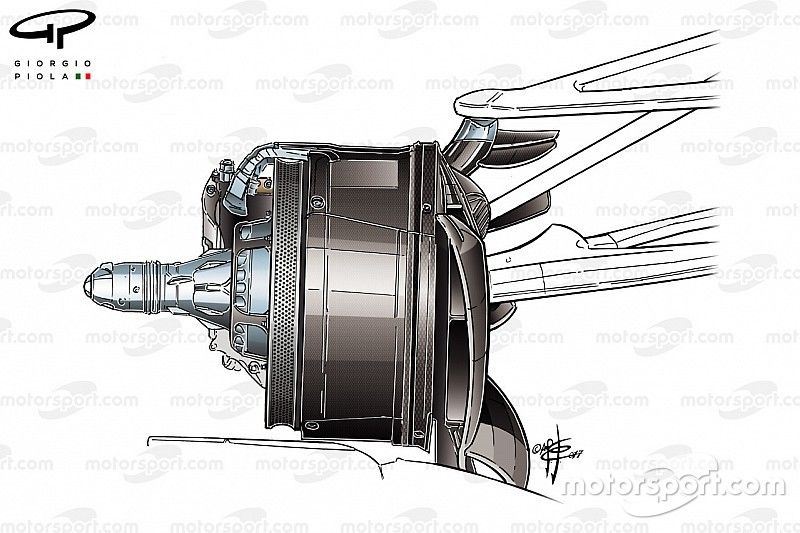Tech analysis: The changes that helped Mercedes dominate
Mercedes' problems in Monaco may well have been an isolated incident, especially as they didn’t affect both cars in the same way, but that didn’t stop the team from making changes for Canada.

Photo by: Giorgio Piola
Giorgio Piola's F1 technical analysis
Giorgio Piola is the preeminent Formula 1 technical journalist. View our full selection of Giorgio's technical illustrative content
The Silver Arrows' struggle to create the correct temperature in the tyres throughout qualifying saw Hamilton miss out on Q3 in the principality, with the Briton suggesting that tyre temperatures differed on all four corners of the car.
Pirelli’s ultrasoft tyre is in the low working range, meaning it works best when in the 85-110°C window and not being in this sweet spot is the difference between having a car that the driver can push and one with very little grip, as the compound doesn’t give the desired performance.
So close is the thermal relationship between the heat generated by the brakes, the wheel rim and the core temperature of the tyre that teams make a concerted effort to have different set-ups for each circuit.
For Canada, Mercedes arrived with numerous versions of its brake drum layout in order to get the best from the car as each version transmits heat from the brakes through the wheel rim to the tyre differently.
Ordinarily the team would run a fully enclosed drum, as pictured above. This retains the heat within the drum in such a way that the temperature being created is balanced across the entire width of the wheel rim and tyre.
This is what the team had selected for Monaco, looking to stabilise tyre temperatures at the low-speed circuit.
It also ran the set-up early on during free practice in Canada, checking it off from the list of choices.
The team then trialled this open-ended drum configuration complete with a louvred panel above the brake disc in an effort to isolate the heat being generated and utilise it in a specific way as it was transferred to the wheel rim and tyre.
The option that the team actually plumbed for is one we’ve seen used last season, with the louvred panel removed and the drum left open ended, allowing the heat generated under braking to be evacuated out of the wheel face.
Ferrari dabbled with different brake cooling and tyre warming options too, trialling a brake drum complete with teardrop-shaped outlets on Friday before opting for a more enclosed option for qualifying and the race.
You’ll note that both teams have converged on the maximum brake disc cooling solution too (inset), utilising a chevron drill pattern with which to dissipate the heat generated under braking.
The pattern is used to maintain structural integrity at the disc's edges (highlighted in yellow) as six holes of this size straight across the face may lead to the disc breaking up.
Be part of Motorsport community
Join the conversationShare Or Save This Story
Subscribe and access Motorsport.com with your ad-blocker.
From Formula 1 to MotoGP we report straight from the paddock because we love our sport, just like you. In order to keep delivering our expert journalism, our website uses advertising. Still, we want to give you the opportunity to enjoy an ad-free and tracker-free website and to continue using your adblocker.























Top Comments